發布日期:2023-06-21更新日期:2023-06-21
Old Fongshan City Wall Historic Route: A Time-honored Cultural Corridor
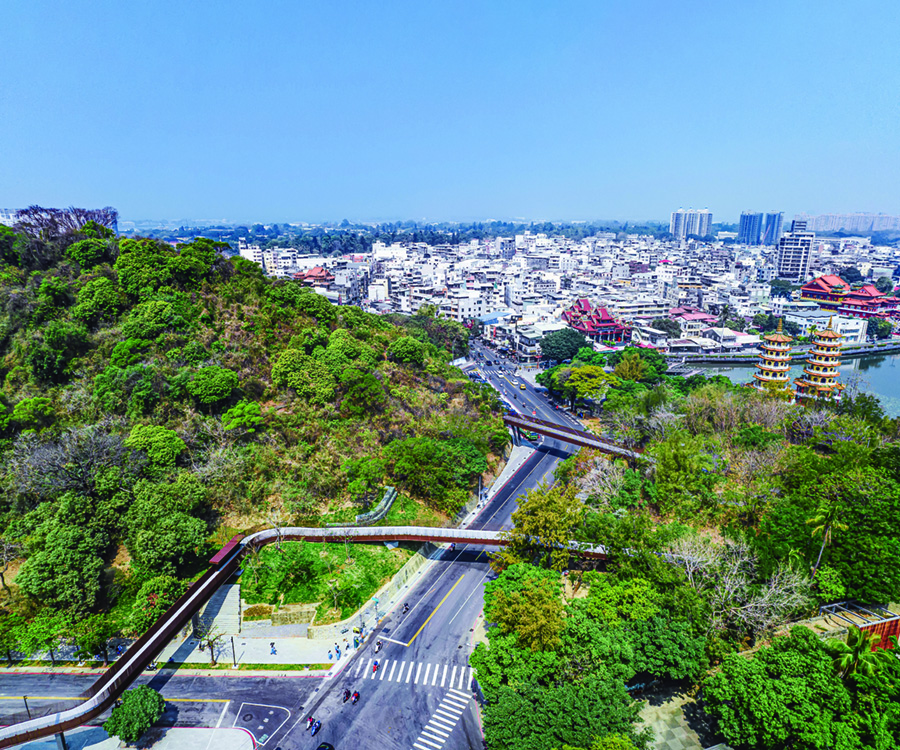
Following a seven-year renovation effort, the approximately 770-meter-long Old Fongshan City Wall Historic Route(見城之道), near Lotus Pond(蓮池潭)in Kaohsiung's Zuoying District, was opened to the public in March this year.
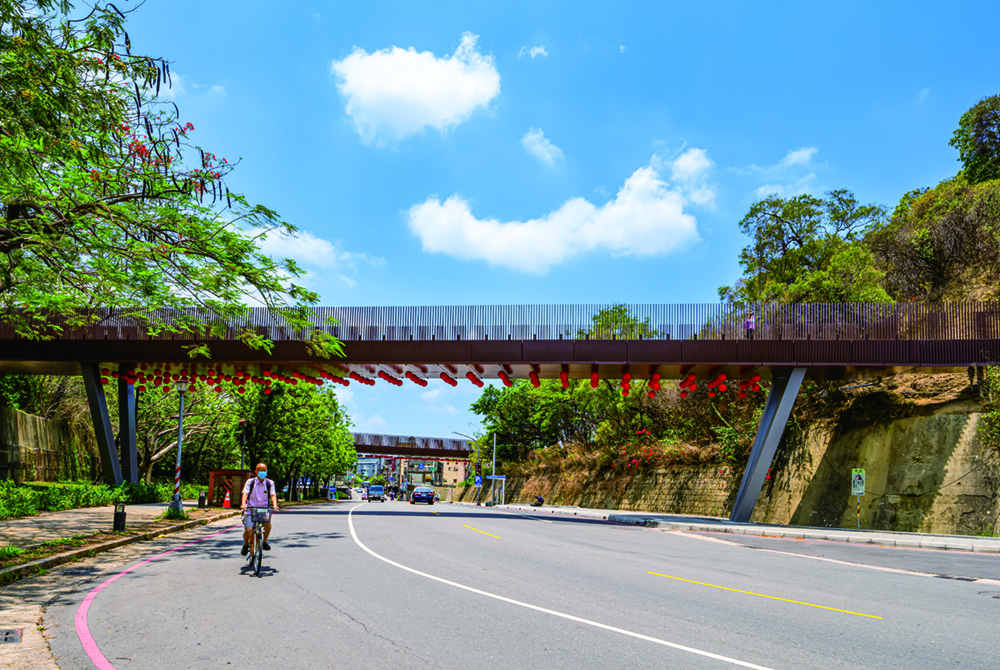
While strolling along the route, which is at the foot of Gueishan(龜山, Turtle Mountain), visitors can take in picturesque scenes where the ancient town connects the mountains and the lake, forming a stunning landscape. The Old Fongshan City Wall Historic Route brings the historical charm of the old city of Zuoying to life, reviving long-forgotten memories of these characterful neighborhoods.
In 1722, the governor of Fongshan County (which administered much of modern-day Kaohsiung and Pingtung) built the first city wall made of mud. Constructed near Sheshan(蛇山, Snake Mountain)and Gueishan, the fortress quickly emerged as a political and economic center. However, the battlements were destroyed during an uprising. From 1825 to 1826, they were rebuilt using stone.
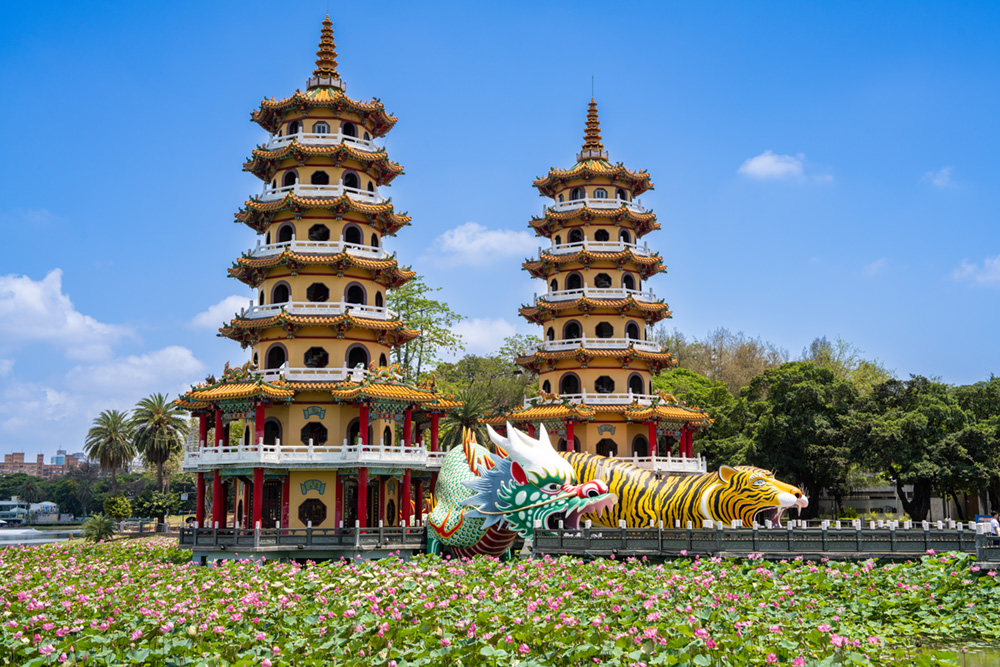
The Old Fongshan City Wall Historic Route bridges the divide that resulted from the construction of Shengli Road(勝利路), when a hole was punched through the wall and adjacent Gueishan. Starting from the old center of Fongshan, the route extends northward, crossing woodlands and parking lots along the old city wall, then connecting to existing trails on both Big Gueishan and Small Gueishan. From the observation deck on the Small Guishan trail, there are postcard-quality views over Lotus Pond.
From the Old Fongshan City Wall Historic Route, one can overlook the ancient city walls. Some sections of the route feature glass curtain walls with site descriptions printed on the glass that make up some of the route's protective walls. While exploring the route, it is worth visiting the North Gate wall, the East Gate moat, and the West Gate Ruins Park(西門遺址公園). The East Gate has a 500-meter-long moat just outside the city wall. It was replenished with water from Lotus Pond in 2020, finally restoring it as a water-filled landscape feature.
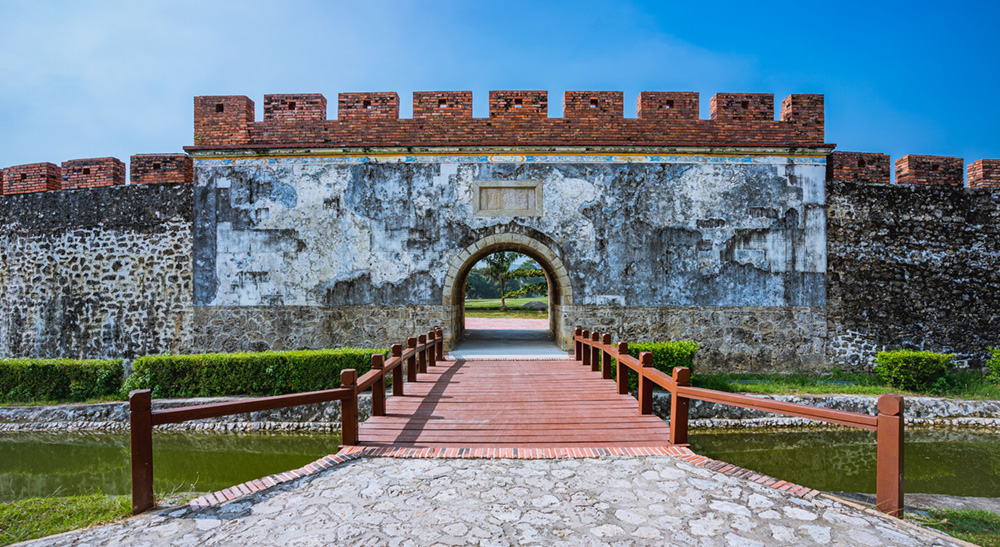
The sturdy stone walls and moat of the East Gate have nurtured a unique cultural settlement within the old city. In the West Gate Ruins Park, remnants of the original gate and wall are preserved alongside more recent air-raid shelters and former military dependents' housing. Because space was lacking, some military dependents' houses were built up against and incorporate parts of the ancient city walls.
The integration of the ancient town into modern people's lives has brought into being a unique cultural scenery. The positive attitude of Kaohsiung's population toward historical sites has made this place shine brightly.
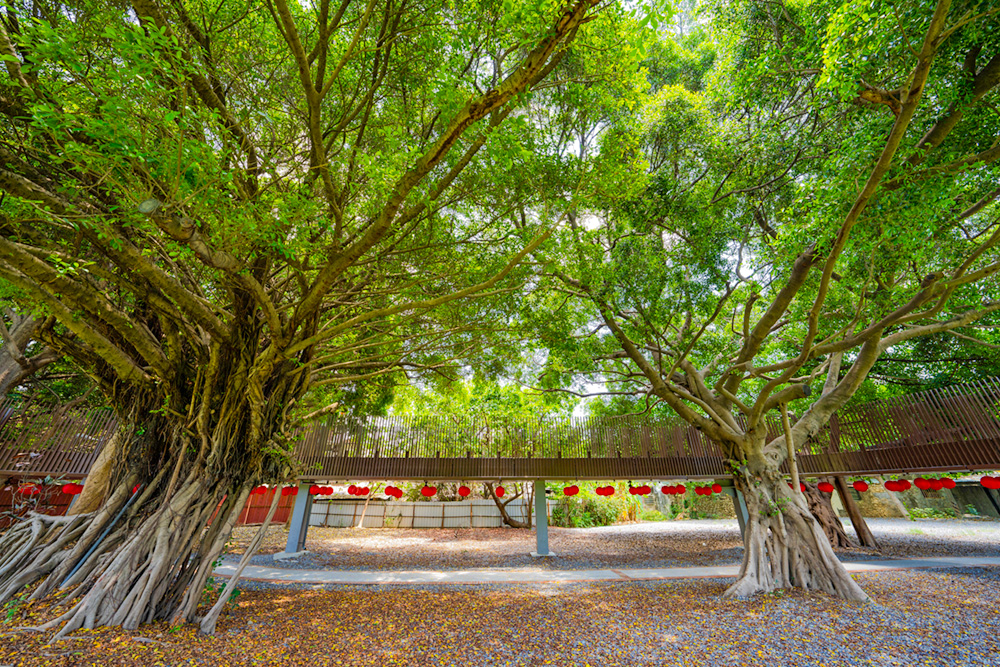
The Center of Old Fongshan City History
見城館
No. 157-2, Gueishan Ln., Zuoying Dist., Kaohsiung City
Website: https://reurl.cc/3xNMMV
跨越300年時光 左營「見城之道」文化廊道
見城計畫歷經7年的耕耘,高雄左營蓮池潭邊、龜山腳下的「見城之道」於今年3月竣工啟用,總長約770公尺。遊客散步於見城之道,一覽古城連接山、湖的景緻,「見城之道」再現左營舊城的歷史風華。
1722年時,左營鳳山縣築起台灣第一座土城,依傍蛇山、龜山而建的土城成為政治與經濟中心,其後土城因民變被攻陷,遭到破壞,1925年土城重建為石城,1826年建造完工。
見城之道縫合了開闢勝利路而被切開的龜山,見城之道由見城館開始,往北沿著舊城牆穿越樹林及停車場,連接大小龜山既有步道,值得一提的是,小龜山步道設置的觀景平台是遠眺蓮池潭的最佳地點之一,景緻有如風景明信片一般。
從見城之道眺望古拙的舊城牆,部分步道護牆採用玻璃帷幕,文字解說與眼前的舊城景觀結合,順道參觀北門城牆、東門護城河及西門遺址公園,其中左營舊城東門,城牆外長達500公尺的護城河,2020年引蓮池潭水,護城河終於恢復通水了!東門堅固的石牆和護城河等歷史痕跡孕育舊城獨樹一幟的人文聚落;造訪西門遺址公園,這裡仍保留原位於眷村房舍內的西門遺址、舊城牆與防空洞,還可以見到昔日在左營安家落戶的軍眷民宅,因舊城的空間有限,有的眷村建築的民宅圍牆就是古城牆!
古城融入民眾的生活,這是高雄獨特的文化樣貌,高雄人對待古蹟的態度,讓古城文化熠熠生輝。